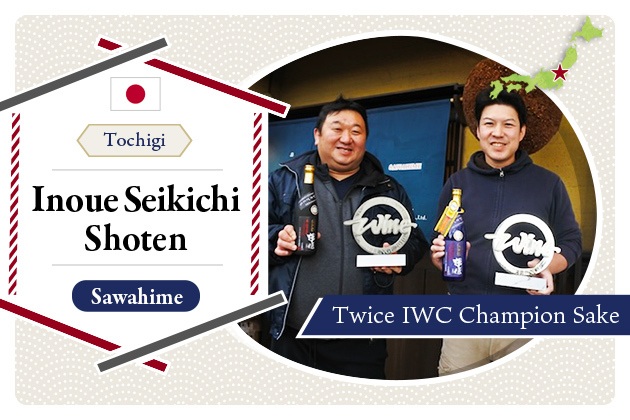
2024.02
21
How Much Sake Kasu is Being Reused? Latest Report Including Statistics on Disposal/Reuse Rates
Sake kasu (sake lees) is a byproduct of sake production. It has long been used for a variety of purposes, but in recent years its disposal rate is said to be increasing.
It is difficult to know the actual status of utilization of sake kasu, and sometimes there is misinformation flying around. This time, the Sake Street editorial team has conducted its own survey on the usage of sake kasu and here are our results.
Sake kasu production process and usage
First, let us review how sake kasu is produced and what it is generally used for.
Production process
A very simple explanation of the sake production process is as follows.
(1) Rice, rice koji, water, and other ingredients are mixed and fermented.
(2) Press the fermented mixture to separate the liquid from the solid part.
The liquid part separated in (2) becomes sake and the solid part becomes sake kasu. Incidentally, sake called "origarami" or "nigori" is a state in which some solids are mixed in with the liquid.
Usage
Historically, sake kasu has been used for a wide variety of purposes. Some examples are:
An ingredient for home cooking. Sake kasu has been used for many years in many parts of Japan in dishes such as kasu-jiru (sake lees soup), where the flavor of sake kasu can be enjoyed, kasu-zuke (fish or meat marinated in sake lees), where the flavor of sake-kasu is transferred to fish or meat, and Nara-zuke, where vegetables are pickled many times over and finished off.
There are also processed foods made from sake kasu. One such product is amazake, which is made by dissolving sake kasu in hot water, heating it, and adding sugar or other sweeteners (there is another type of amazake made using koji instead of sake kasu). Recently, sweets such as sake kasu ice cream have also become popular.
Sake kasu is also used as animal feed. In addition to its high nutritional value due to its high protein content, sake kasu is also attracting attention from the standpoint that it can be produced domestically, which tends to rely on imports, and from an environmentally friendly perspective.
In addition, sake kasu can be used as compost. Nutritious sake kasu enriches the soil.
Amount of sake kasu produced
Sake kasu is a byproduct of sake brewing, but how much is produced annually? According to the annual statistics published by the National Tax Administration Agency, about 32,000 tons of sake kasu is produced in a year.
Source: https://www.nta.go.jp/taxes/sake/shiori-gaikyo/seizojokyo/2021/pdf/001.pdf
This amount represents about 10% of the total amount of sake produced each year. In recent years, this percentage has been slightly increasing. The cause is unknown, but it is conceivable that this is due to the fact that the percentage of ginjo sake production, which tends to produce a large amount of sake kasu, has also increased in recent years.
Utilization of sake kasu
Approximately 32,000 tons of sake kasu are produced each year, but how much of that is reused? In this survey, we could not find any statistics that show the utilization rate of sake kasu in Japan as a whole. However, we can find some data that may be useful in estimating the trend.
According to a survey compiled by the Akita Prefectural Federation of Small Business Associations, the utilization rate of sake lees is 75%. Other inquiries were made to the Central Federation of Small Business Associations and sake brewers' associations in the top 10 producing prefectures, but unfortunately, similar surveys could not be confirmed, with either no statistics or no response.
Source: https://www.nikkei.com/article/DGXZQOCC08D140Y1A600C2000000/
According to the data submitted to the Ministry of the Environment by the Japan Sake and Shochu Makers Association in 2011, the recycling rate of "food waste, etc.," which includes rice bran generated during rice polishing in addition to sake kasu, has been maintained at over 90%.
Source: https://www.env.go.jp/content/900533431.pdf
It is often said that most sake kasu are disposed of, but although there are many uncertainties about the latest information, it seems that a relatively high level of sake kasu is being utilized for some purpose.
Recently, however, the utilization of sake kasu is reportedly on the decline. The reason is that the culture of making Nara-zuke is declining and its use in households is decreasing. However, we have not been able to find accurate statistics on the usage transition of sake kasu, and we have not been able to confirm this discourse with data.
- Disposal Methods and Costs
If sake kasu produced in a brewery are not reused but disposed of, how are they processed?
According to Atsushi Kabasawa, representative of FARM8, a company that produces products utilizing sake kasu in Niigata, there are not many sake breweries that hand over sake kasu to a processor as waste. He said that it is common for sake breweries to take sake kasu back in some form, such as for use as pickles, animal feed, compost, or to distribute to the brewery's neighbors.
When used by general businesses for composting, the price is about 5,000 yen per 100 kg, but the brewery must bear the logistics costs. Some companies do not put a price on it, and sometimes give it to pickle companies almost free of charge. In other words, there are few cases in which sake breweries can reuse sake in a way that is highly beneficial to them.
However, it is also difficult to process sake kasu at the brewery. Large breweries that brew a lot of sake may have equipment that can process a large amount of sake kasu at one time, but this is not the case for small breweries.
While it may be possible to sell sake kasu from well-known brands through retail sales, there are endless problems, such as the labor involved in bagging small quantities of sake kasu during the busiest brewing season. Kabasawa, who is also involved in the brewing business as a representative of Tsunan Brewery, says, "The smaller the brewery, the more difficult it is to handle sake kasu."
In order to solve these problems of sake kasu, FARM8 purchases sake kasu at a reasonable price from sake breweries in Niigata Prefecture and uses it to make original products. The following section introduces these high-profile projects and the sustainable sakekasu items that have been created as a result.
New approach to sake kasu reuse
FARM8: Familiar products that fit into everyday life
FARM8 purchases sake kasu produced in sake breweries at a fair price and transforms them into unique products such as "Hacco Gelato", a 100% vegetable-based product made mainly from sake lees, and "JOGURT", which is made by fermenting sake kasu again with lactic acid bacteria.
FARM8's products, created in reference to the efforts of a research institute in Niigata, where top-class knowledge of rice-related processing is gathered, are developed with an eye to not pushing “sake kasu" too far to the forefront. Aiming to create a situation where many people eat sake kasu without realizing it, FARM8 plans to continue developing items that are easy to incorporate into daily life.
Ethical Spirits: Expressing the appeal of sake kasu as craft gin
Ethical Spirits creates "LAST", a craft gin made from sake kasu, with the idea of giving new life to the sake lees that are obtained at the last stage of the process.
The base spirit is made from Kasutori shochu (shochu made from fermented sake kasu and then distilled) produced by the Chiyomusubi Brewery in Tottori Prefecture, Japan. By soaking several times more botanicals than a typical gin, it creates a unique flavor that combines the ginjo aroma and freshness derived from sake kasu with the gorgeous aroma of the botanicals.
Ine to Agave: Launching a food processing plant to turn sake kasu into treasure
SANABURI FACTORY is a food processing plant established by Ine to Agave, a craft sake brewery in Akita Prefecture. Its purpose is to transform sake kasu and other potentially discarded ingredients into new, valuable products.
The first product is the Hakko Mayo series. Using Ine to Agave's sake kasu, which are made without any additives from rice cultivation to brewing, as the main ingredient, this product has a mayonnaise-like flavor using only vegetable ingredients. They have also developed a variety of other products such as “Hakko Custard" and “Hakko Ketchup," expanding a new genre of reusing sake kasu.
Summary
Sake kasu is an ingredient that is sometimes discarded, but as far as we can infer from the results of some surveys, it seems that it is reused at a relatively high level. However, there are many areas that do not have statistics on the reuse of sake kasu, and it may be said that most of the information is vague, which is a challenge.
In recent years, the use of sake kasu at home is decreasing due to changes in food culture, but there is a growing movement to find new ways to use sake kasu from the viewpoint of sustainability. Through the unique sake kasu products developed one after another, we are sure to discover the charms of sake kasu that we have never known before.
Hope that we can continue to use sake kasu without waste and make full use of the rich foodstuff.
Pickup Articles
2019.01.18
2019.01.25
Trending Articles
Popular Articles
Recent Articles













